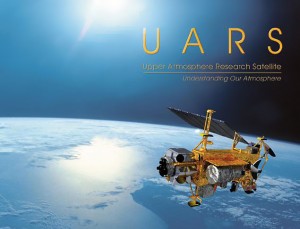NASA‘s Upper Atmosphere Research Satellite, or UARS, is expected to re-enter Earth’s atmosphere in late September or early October 2011, almost six years after the end of a productive scientific life.
It is too early to say exactly when UARS will re-enter and what geographic area may be affected, but NASA is watching the satellite closely. Currently it could land anywhere between 57 degrees north and 57 degrees south of the equator – most of the populated world. NASA say the risk to public safety or property is extremely small, approximately just 1 in 3,200.
Most of the satellite will break or burn up before reaching Earth, but scientists have identified 26 separate pieces, that could survive the fall through the earth’s atmosphere . Debris could rain across an area 250 – 310 miles wide, and it is impossible to pinpoint just where in that zone the debris will land. NASA estimates the debris footprint will be about 500 miles long.
NASA said scientists would only be able to make more accurate predictions about where the satellite might land two hours before it enters the Earth’s atmosphere.
The satellite was launched in 1991 by the Space Shuttle Discovery, and is 35 feet long, 15 feet in diameter, weighs 13,000 pounds, and carries 10 instruments. UARS was officially decommissioned on December 14, 2005.

